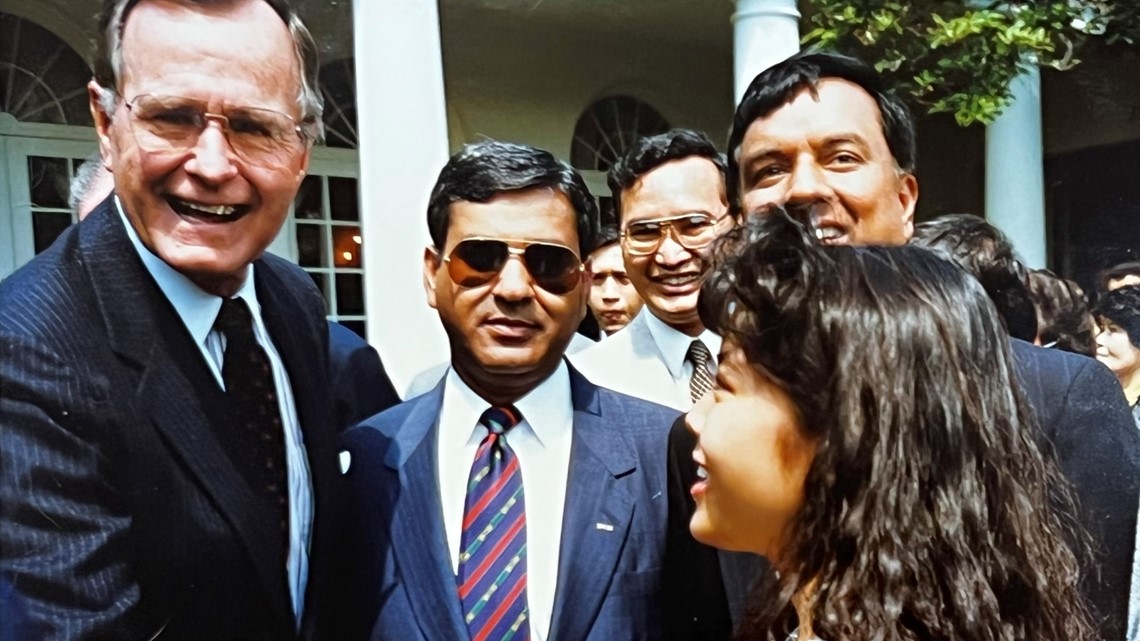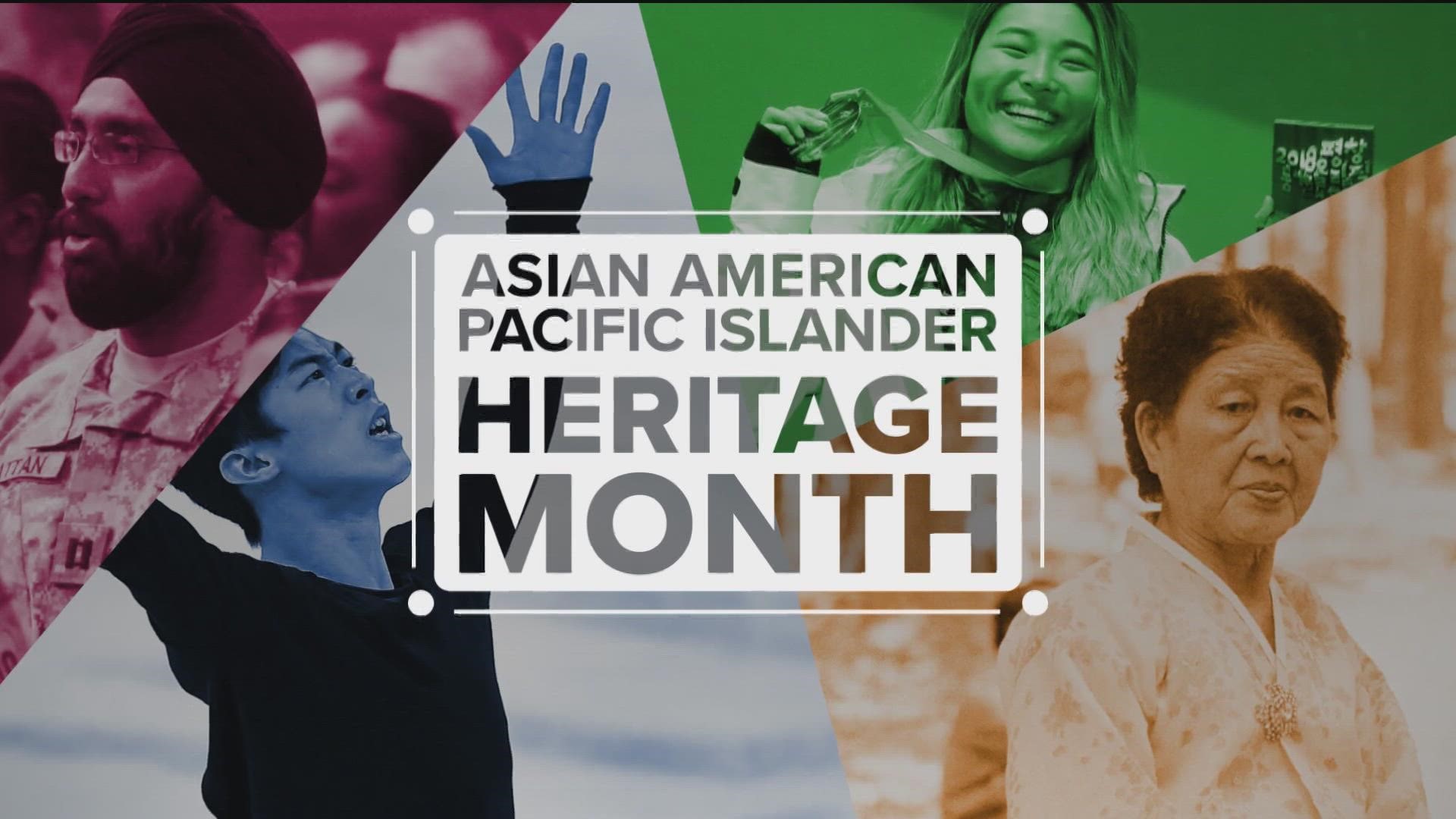SAN DIEGO — For those of us who are Asian American and Pacific Islander, the month of May is a time to celebrate our heritage and pay honor to our cultural roots. It’s also a time to share our history with others. The more we learn about each other, the more we will understand each other.
This month, we are doing a series of stories to showcase San Diego's diverse AAPI community.
We begin with a closer look at the history of Asian American and Pacific Islander Heritage Month and who exactly it honors.
San Diego County has a large AAPI community with more than 425,000 people; the 7th largest in the country. While we are united under the AAPI umbrella, we represent many ethnicities from around the world. Each one is woven into the cultural fabric of San Diego.
The celebrations in the United States, all started with a Joint Resolution by the U.S. House and Senate approved in October 1978. President Jimmy Carter signed the proclamation, kicking off the first Asian/Pacific American Heritage Week.
A little more than a decade later, on May 7th, 1990, President George Herbert Walker Bush expanded the celebration of Asian/Pacific American Heritage from a week to a month.
I was invited to attend the ceremony in the White House Rose Garden, as the Youth Ambassador for the Organization of Chinese Americans. I remember how special it felt as a teenager, to have an entire month dedicated to honoring Asian/Pacific American heritage.


Nearly 20 years after that, in 2009, President Barack Obama updated the name to Asian American and Pacific Islander Month, separating the two groups. This is how we celebrate it today.
"Part of it is, we're just trying to invite as many people to the party as possible. I like to say that people in Asia don't call themselves Asian," said Brian Hu, Artistic Director of Pacific Arts Movement.
Hu explains the term "Asian" is a convenience of the west. Many people come from home countries that have territorial disputes, but once here in America, viewpoints change.
"When people from Asia move to the United States, they see themselves as [from their home country]. 'I’m a Chinese immigrant. I'm a Pakistani immigrant.' But when you start realizing that mainstream United States thinks you're all the same— they can't tell the difference between any of you, they don't bother learning any of your names or how to pronounce them— then you realize, 'Wait, we have something in common. And if they're going to see us as all the same, maybe we should stick together and fight for each other.'"
Windi Sasaki is Associate Director of Asian Pacific Islander Middle Eastern Desi American Programs and Services at UC San Diego.
It's a new office formed just five years ago at the request of students who wanted a resource for support and information on campus. The student-driven program was formed out of a need for coalition-building, in much the same way an alliance formed decades ago when graduate students first came up with the term "Asian American" in 1968.
"It was a term coined by graduate students at UC Berkeley in the 1960s, and at the time there were predominantly Asian-Americans in the U.S. who were from China, Japan and the Philipines," explained Sasaki.
Through the years, the population has grown more diverse, leading to the importance of distinguishing Pacific Islanders from Asian Americans.
"Many Pacific Islanders are U.S. Citizens," said Sasaski. "Much in the ways that we look at Native American populations, this is the same kind of idea for some of those Pacific Island groups because they're part of the U.S."
"They're indigenous. People who are Native Hawaiian are not the same as a Chinese person who lives in Hawaii. The Chinese person is a settler," explained Hu. "By saying Asian American and Pacific Islander, we're giving the opportunity to say, Pacific Islanders- they're different and they go through something different."
Pacific Islanders are descendants of the indigenous peoples of Polynesia, Micronesia and Melanesia.
The definition of an Asian American is less clear. Depending on who you ask, it generally includes people with origins from 5 different regions:
- Eastern Asia, including China, Japan and Korea
- Southern Asia, including India, Bangladesh, and Pakistan
- Southeast Asia, including the Philipines, Vietnam, Laos and Cambodia
- Central Asia, including Kazakhstan Tajikistan and Uzbekistan
- West Asia, including Iraq, Iran, Israel, and Saudi Arabia
Which communities celebrate AAPI Heritage month, however, is still evolving.
"I like to think about it as who wants to be included," said Hu. "Let's be inclusive as opposed to just drawing boundaries, and we're finding that these boundaries are constantly changing.”
"I think that's still something that people are trying to figure out," said Sasaki. "Do we belong in the celebration? Or do we want our own thing? And I think people are still trying to sort that out and decide how that goes."
As for why the month of May was chosen, there are two reasons. It marks the first Japanese Immigrants arriving in the United States on May 7th, 1843. It also celebrates the completion of the first Transcontinental Railroad on May 10th, 1869. About 15,000 Chinese workers helped build it; they were paid less than American workers, had to pay for their own food, and lived in tents instead of train cars.
Throughout the month of May, we will share stories featuring some of our local AAPI communities. We invite you to take this cultural journey with us.
WATCH RELATED: JoAnn Fields: A leader in San Diego's growing AAPI community

